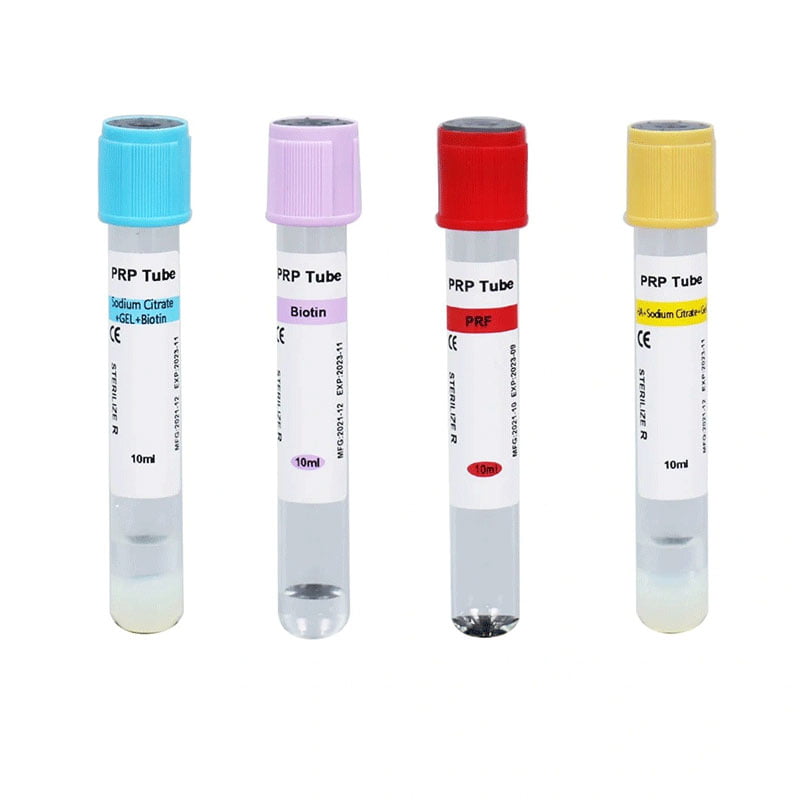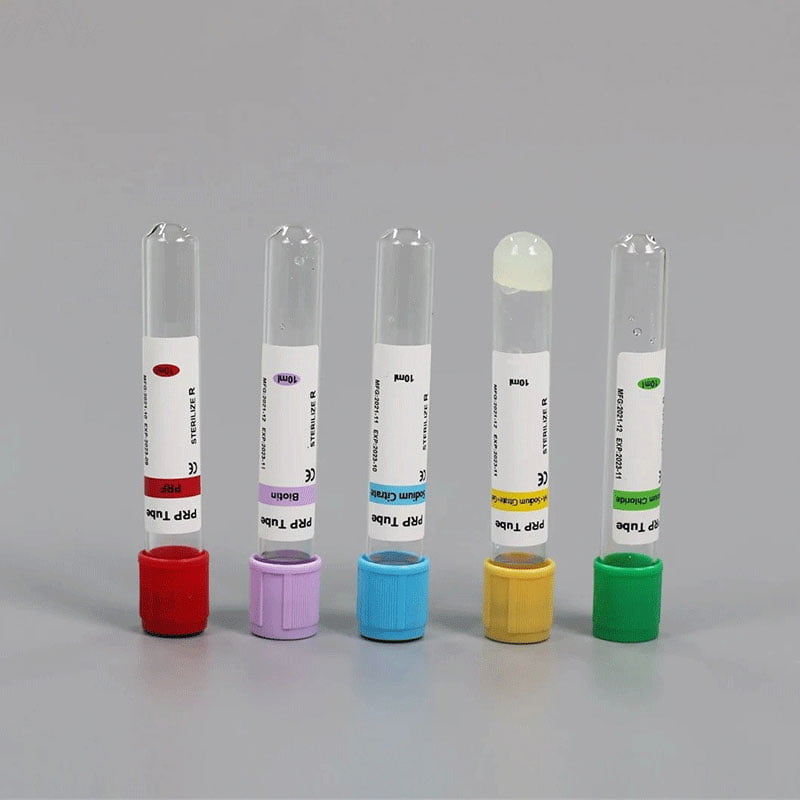| Product Name | Blood Collection Tube |
| Tube Material | PET/Glass |
| OEM/ODM | Yes |
| Certificate | CE, ISO13485, ISO9001 |
| Usage | Blood Collection |
| Sterile | Irradiation Sterilization |
| Sample | Free |
| Service | The groups we serve are distributors, import traders, government procurement, buying agents, and medical chain stores. We provide one-stop procurement for you to simplify your procurement process |
| Selling Units: | Piece/Pieces |
| Package Type: | 100PCS/Rack, 1200PCS/CTN |
A blood collection tube is a plastic or glass tube with a rubber stopper on one end. A sample of blood is collected for testing, and the stopper is usually coated with a preservative to prevent clotting.
| Volume/ml | Size/mm | Additive | Separator | Material | Cap Color | Closure |
| 2ml | 13X75 | Clot Activator | Gel | PET/GLASS | Gold Top Tube | Safety Cap+Rubber or Rubber Stopper |
| 3ml | 13X75 | Clot Activator | ||||
| 4ml | 13X75 | Clot Activator | ||||
| 5ml | 13X75 | Clot Activator | ||||
| 6ml | 13X100 | Clot Activator | ||||
| 7ml | 13X100 | Clot Activator | ||||
| 8ml | 16X100 | Clot Activator | ||||
| 9ml | 16X100 | Clot Activator | ||||
| 10ml | 16X100 | Clot Activator | ||||
| If You Need a Customized Vacuum Blood collection tube, Please Contact Us | ||||||


1. A common serum tube with a red cap, a blood collection vessel without additives, is used for routine serum biochemical, blood bank, and serological tests.
2. A rapid serum tube with an orange cap, and a blood collection tube with a coagulant, accelerate the coagulation process. The rapid serum tube can coagulate the collected blood within 5 minutes, which is suitable for emergency serum serialization tests.
3. The golden head cover of the inert separation glue coagulant tube, inert separation glue, and coagulant are added to the blood sampling tube. After centrifugation, the inert separation glue can completely separate the liquid components (serum or plasma) and solid components (red blood cells, white blood cells, platelets, fibin, etc.) of the blood and completely accumulate in the center of the test tube to form a barrier, and the specimen remains stable for 48 hours.
Procoagulants can quickly activate the coagulation mechanism and accelerate the coagulation process, which is suitable for emergency serum biochemical tests.
4. In the green head cap of the heparin anticoagulant tube, heparin is added to the blood sampling tube. Heparin tubes have the function of antithrombin directly and can prolong the clotting time of specimens. It is suitable for the erythrocyte fragility test, blood gas analysis, hematocrit test, erythrocyte sedimentation rate, and general biochemical determination, but not for the hemagglutination test.
Excessive heparin causes white blood cells to accumulate and cannot be used in white blood cell counts. It is not suitable for leukocyte classification because it can make the background of the blood stain light blue.
5. A light green cap of the plasma separation tube. Lithium heparin tube anticoagulant is added to the inert separation rubber tube, which can achieve the purpose of rapid plasma separation. The machine is the best choice for electrolyte detection and can also be utilized for routine plasma biochemical measurement and emergency plasma biochemical detection in the ICU. The machine allows direct loading of plasma samples and ensures their stability in the refrigerated state for 48 hours.
6. EDTA anticoagulant tube purple cap, ethylenediamine tetraacetic acid (EDTA, molecular weight 292), and its salt are amino polycarboxylic acids that can effectively chelate calcium ions in blood samples, chelating calcium or removing the calcium reaction site will block and terminate the endogenous or exogenous coagulation process, so as to prevent coagulation of blood samples. It is not suitable for blood coagulation tests or platelet function tests. It is also not suitable for the determination of calcium ions, potassium ions, sodium ions, iron ions, alkaline phosphatase, creatine kinase, leucine aminopeptidase, or PCR tests.
7. Sodium citrate coagulation test tube, light blue cap, sodium citrate mainly chelates with calcium ions in the blood and plays an anticoagulant effect. It is suitable for blood coagulation experiments and is approved by the national committee for clinical laboratory standards. The NCCLS recommended anticoagulant concentration is 3.2% or 3.8% (equivalent to 0.109 mol/L or 0.129 mol/L), with an anticoagulant-to-blood ratio of 1:9.
8. blackcap of sodium citrate Tube ESR test tube. The concentration of sodium citrate required by the ESR tube test is 3.2% (equivalent to 0.109 mol/L), and the ratio of anticoagulant to blood is 1:4.
9. Potassium oxalate/sodium fluoride gray cap, sodium fluoride is a kind of weak anticoagulant, usually with potassium oxalate or sodium iodate combined use, its ratio is 1 sodium fluoride, potassium oxalate 3. 4mg of this mixture can prevent coagulation and inhibit glycolysis in 1 ml of blood for 23 days. It is an estimated preservative for blood glucose measurement.
A vacuum tube is typically used for blood collection. The vacuum tube has a stopper at one end and a plunger at the other end. The stopper is pierced with a blood collection needle and the plunger is depressed, allowing the blood to be drawn into the tube.
All tubes should store red blood cells. Green tubes are for storing plasma, and blue tubes are designated for platelet storage. Yellow or orange tubes should store all other blood components.
The EDTA tube is used to collect blood for laboratory testing. It contains an anticoagulant that prevents the blood from clotting and allows for accurate testing.
Medical Consumables Manufacturer Established 2003
High-end equipment, professional team, first-class service
Sinymedical helps you simplify the process from import to sale.
Let your medical consumables become high-quality products.
Copyright © 2025 | Ningbo Siny Medical Technology Co., Ltd
Copyright © 2025 | Ningbo Siny Medical Technology Co., Ltd
